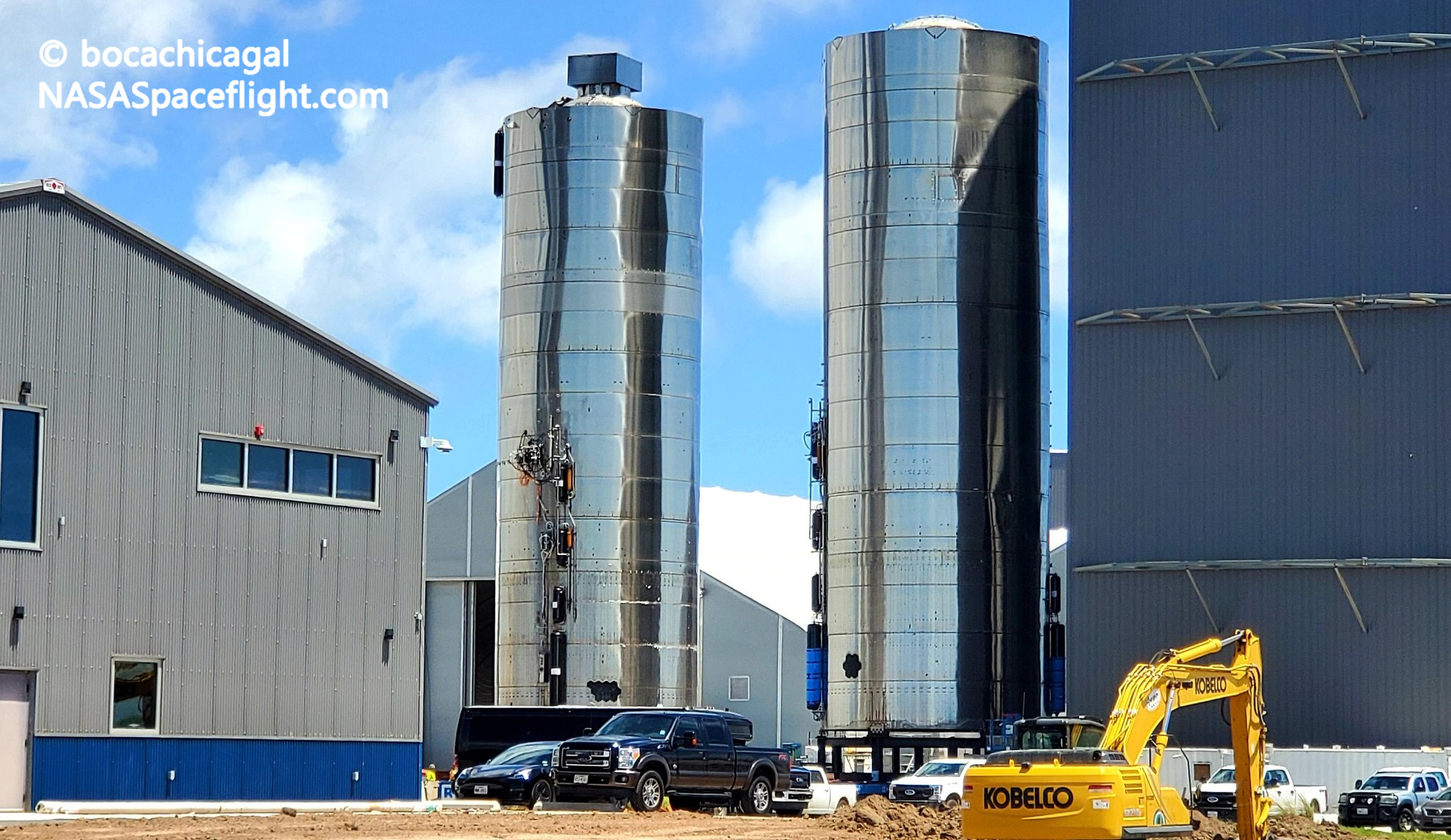
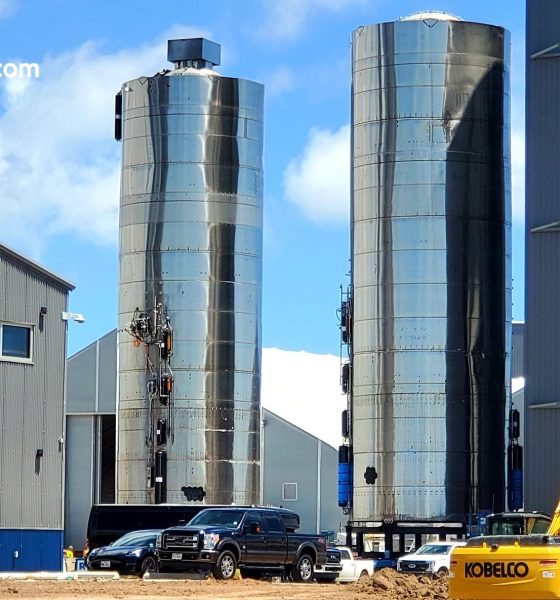
News
SpaceX Starship prototypes swap places for next hop test
SpaceX is swapping two almost identical Starships to allow for the first flight-proven prototype to be repaired while wasting no time preparing for the next Starship hop test.
Known as Starships serial number 5 and 6 (SN5/SN6), the twin prototypes were built more or less simultaneously and completed within a few weeks of each other. Due to a number of delays largely unrelated to Starship SN5 itself, the rocket’s test campaign suffered several weeks of delays, giving SpaceX’s production team plenty of time to complete sister ship SN6 well before it was needed. For a time, it wasn’t even clear if SN6 had a future, given comments made by CEO Elon Musk that the next full-scale prototype – Starship SN8 – would be a significant upgrade, potentially making SN6 redundant.
However, on August 3rd, SN5 stunned with what appeared to be an almost flawless Starship hop debut. The success confirmed that the design – while likely outdated upon SN8’s arrival – was still more than satisfactory for low-altitude, low-velocity flight tests. In the afterglow of a milestone ~18 months in the making, Musk almost immediately revealed that SpaceX’s next goal was to perform hop test after hop test until Starship flight operations are more or less routine. Today’s transport operations mean that that multi-hop test campaign could be right around the corner.
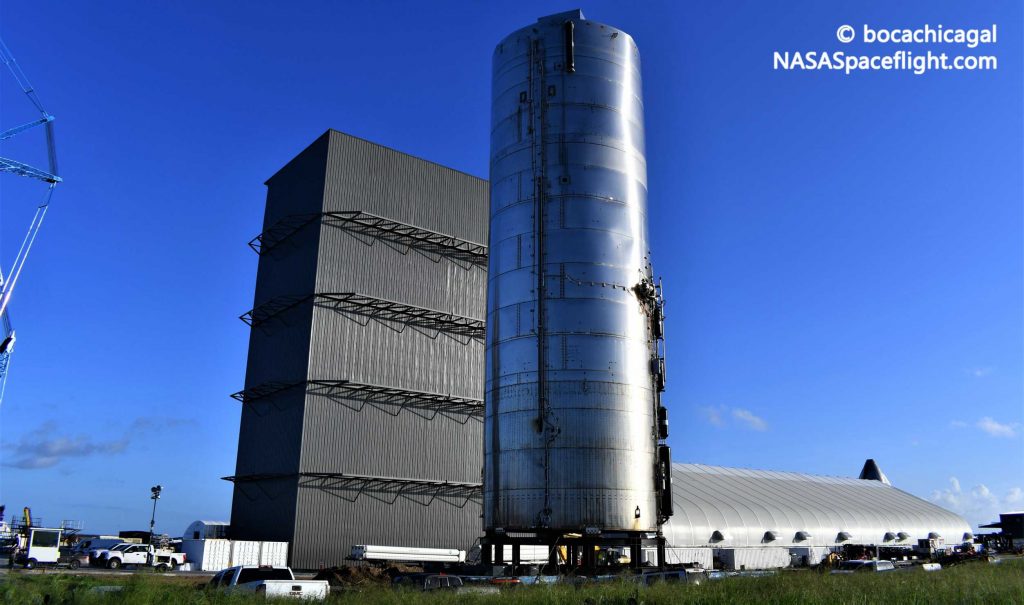
In line with additional information conveyed by Musk a few days after SN5’s hop debut, SpaceX has transported Starship SN5 back to nearby production facilities and quite literally traded places with Starship SN6 in a vertical assembly hangar.
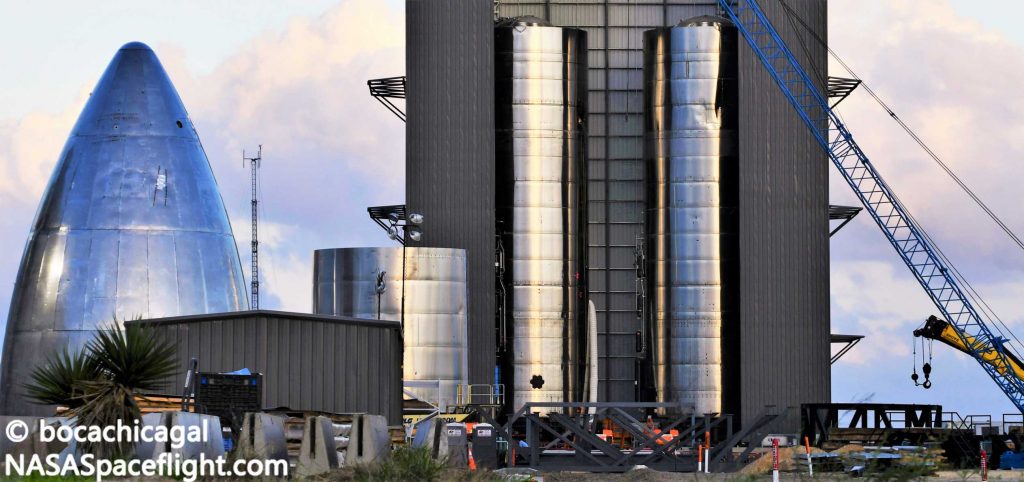
Right on schedule, SpaceX also transported Starship SN6 to the launch pad on the same day as Starship SN5’s factory return. If most of Starship SN5’s testing delays were primarily related to the significant repairs and upgrades made to the pad’s ground support equipment after SN4’s destructive explosion and the launch mount – a steel structure that supports, powers, and fuels Starships – is mostly unscathed after SN5’s hop debut, Starship SN6 could have a much smoother path to testing.
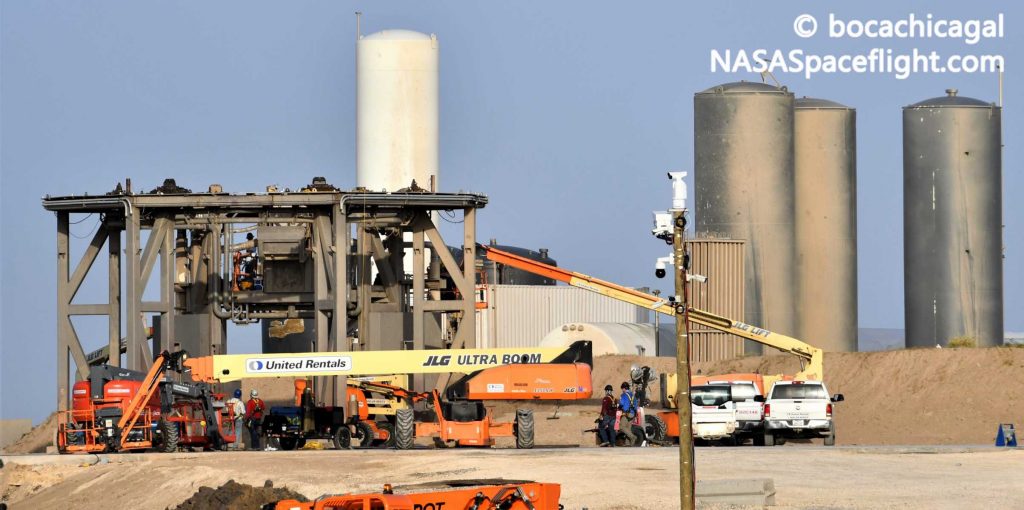
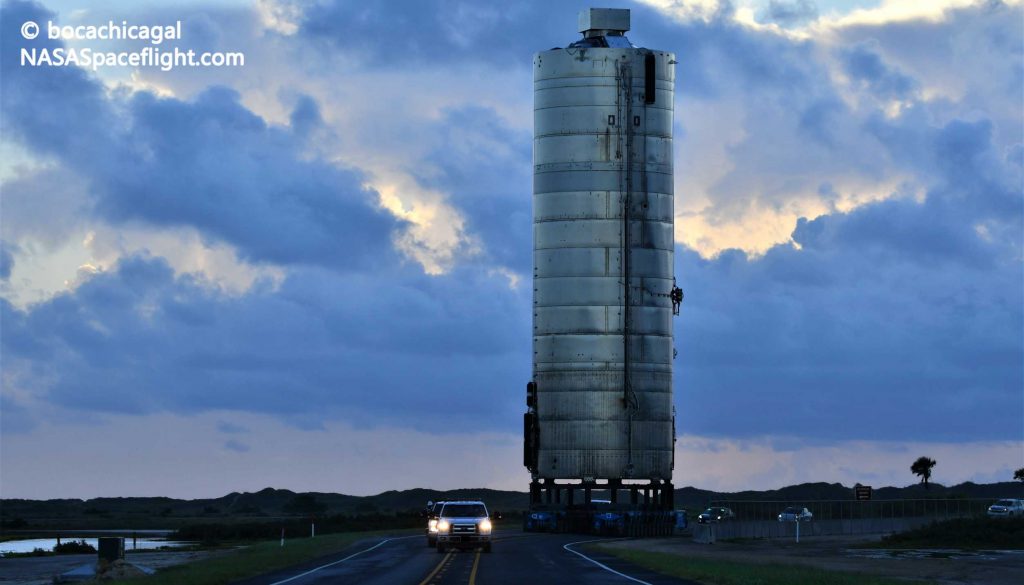
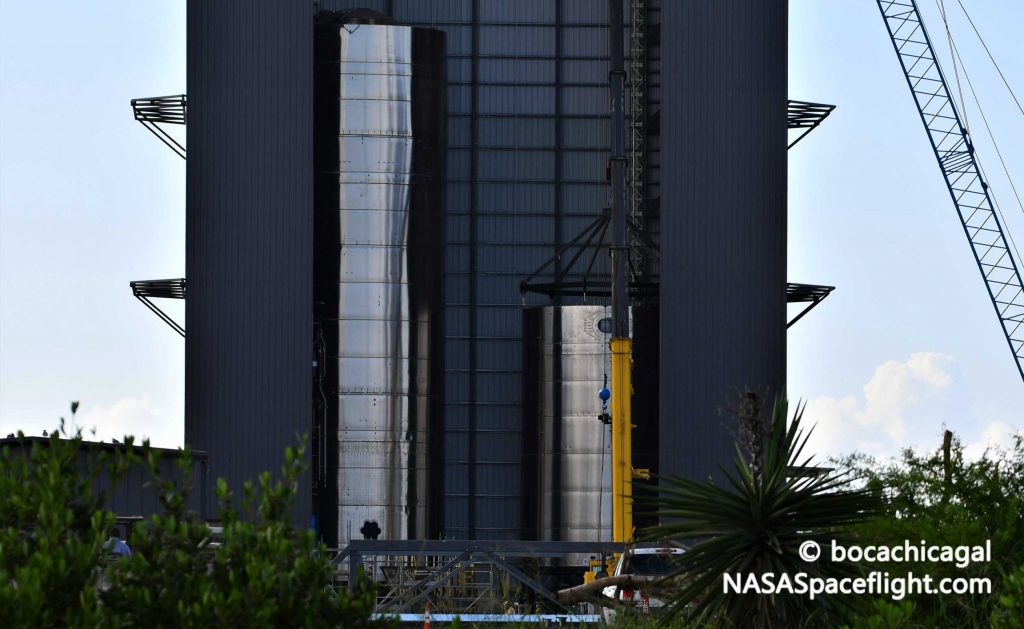
SpaceX has already begun outfitting the launch mount with a hydraulic ram device used to simulate the thrust of a Raptor engine by mechanically stressing a Starship’s thrust structure. That confirms that SpaceX will test Starship SN6 much like the last few prototypes to reach the pad, beginning with an ambient temperature leak test and a cryogenic proof test with liquid nitrogen and Raptor thrust simulation. Once completed, SpaceX will install one Raptor engine on the Starship prototype and proceed into the wet dress rehearsal (WDR) and static fire phase of testing.
Based on Starship SN4’s test campaign, SN6 could kick off its first cryogenic proof test just four days after the rocket is transported to the launch site, followed by a Raptor static fire just a week or so later.
Check out Teslarati’s Marketplace! We offer Tesla accessories, including for the Tesla Cybertruck and Tesla Model 3.

News
Tesla FSD fleet is nearing 7 billion total miles, including 2.5 billion city miles
As can be seen on Tesla’s official FSD webpage, vehicles equipped with the system have now navigated over 6.99 billion miles.

Tesla’s Full Self-Driving (Supervised) fleet is closing in on almost 7 billion total miles driven, as per data posted by the company on its official FSD webpage.
These figures hint at the massive scale of data fueling Tesla’s rapid FSD improvements, which have been quite notable as of late.
FSD mileage milestones
As can be seen on Tesla’s official FSD webpage, vehicles equipped with the system have now navigated over 6.99 billion miles. Tesla owner and avid FSD tester Whole Mars Catalog also shared a screenshot indicating that from the nearly 7 billion miles traveled by the FSD fleet, more than 2.5 billion miles were driven inside cities.
City miles are particularly valuable for complex urban scenarios like unprotected turns, pedestrian interactions, and traffic lights. This is also the difference-maker for FSD, as only complex solutions, such as Waymo’s self-driving taxis, operate similarly on inner-city streets. And even then, incidents such as the San Francisco blackouts have proven challenging for sensor-rich vehicles like Waymos.
Tesla’s data edge
Tesla has a number of advantages in the autonomous vehicle sector, one of which is the size of its fleet and the number of vehicles training FSD on real-world roads. Tesla’s nearly 7 billion FSD miles then allow the company to roll out updates that make its vehicles behave like they are being driven by experienced drivers, even if they are operating on their own.
So notable are Tesla’s improvements to FSD that NVIDIA Director of Robotics Jim Fan, after experiencing FSD v14, noted that the system is the first AI that passes what he described as a “Physical Turing Test.”
“Despite knowing exactly how robot learning works, I still find it magical watching the steering wheel turn by itself. First it feels surreal, next it becomes routine. Then, like the smartphone, taking it away actively hurts. This is how humanity gets rewired and glued to god-like technologies,” Fan wrote in a post on X.
News
Tesla starts showing how FSD will change lives in Europe
Local officials tested the system on narrow country roads and were impressed by FSD’s smooth, human-like driving, with some calling the service a game-changer for everyday life in areas that are far from urban centers.

Tesla has launched Europe’s first public shuttle service using Full Self-Driving (Supervised) in the rural Eifelkreis Bitburg-Prüm region of Germany, demonstrating how the technology can restore independence and mobility for people who struggle with limited transport options.
Local officials tested the system on narrow country roads and were impressed by FSD’s smooth, human-like driving, with some calling the service a game-changer for everyday life in areas that are far from urban centers.
Officials see real impact on rural residents
Arzfeld Mayor Johannes Kuhl and District Administrator Andreas Kruppert personally tested the Tesla shuttle service. This allowed them to see just how well FSD navigated winding lanes and rural roads confidently. Kruppert said, “Autonomous driving sounds like science fiction to many, but we simply see here that it works totally well in rural regions too.” Kuhl, for his part, also noted that FSD “feels like a very experienced driver.”
The pilot complements the area’s “Citizen Bus” program, which provides on-demand rides for elderly residents who can no longer drive themselves. Tesla Europe shared a video of a demonstration of the service, highlighting how FSD gives people their freedom back, even in places where public transport is not as prevalent.
What the Ministry for Economic Affairs and Transport says
Rhineland-Palatinate’s Minister Daniela Schmitt supported the project, praising the collaboration that made this “first of its kind in Europe” possible. As per the ministry, the rural rollout for the service shows FSD’s potential beyond major cities, and it delivers tangible benefits like grocery runs, doctor visits, and social connections for isolated residents.
“Reliable and flexible mobility is especially vital in rural areas. With the launch of a shuttle service using self-driving vehicles (FSD supervised) by Tesla in the Eifelkreis Bitburg-Prüm, an innovative pilot project is now getting underway that complements local community bus services. It is the first project of its kind in Europe.
“The result is a real gain for rural mobility: greater accessibility, more flexibility and tangible benefits for everyday life. A strong signal for innovation, cooperation and future-oriented mobility beyond urban centers,” the ministry wrote in a LinkedIn post.
News
Tesla China quietly posts Robotaxi-related job listing
Tesla China is currently seeking a Low Voltage Electrical Engineer to work on circuit board design for the company’s autonomous vehicles.

Tesla has posted a new job listing in Shanghai explicitly tied to its Robotaxi program, fueling speculation that the company is preparing to launch its dedicated autonomous ride-hailing service in China.
As noted in the listing, Tesla China is currently seeking a Low Voltage Electrical Engineer to work on circuit board design for the company’s autonomous vehicles.
Robotaxi-specific role
The listing, which was shared on social media platform X by industry watcher @tslaming, suggested that Tesla China is looking to fill the role urgently. The job listing itself specifically mentions that the person hired for the role will be working on the Low Voltage Hardware team, which would design the circuit boards that would serve as the nervous system of the Robotaxi.
Key tasks for the role, as indicated in the job listing, include collaboration with PCB layout, firmware, mechanical, program management, and validation teams, among other responsibilities. The role is based in Shanghai.
China Robotaxi launch
China represents a massive potential market for robotaxis, with its dense urban centers and supportive policies in select cities. Tesla has limited permission to roll out FSD in the country, though despite this, its vehicles have been hailed as among the best in the market when it comes to autonomous features. So far, at least, it appears that China supports Tesla’s FSD and Robotaxi rollout.
This was hinted at in November, when Tesla brought the Cybercab to the 8th China International Import Expo (CIIE) in Shanghai, marking the first time that the autonomous two-seater was brought to the Asia-Pacific region. The vehicle, despite not having a release date in China, received a significant amount of interest among the event’s attendees.








